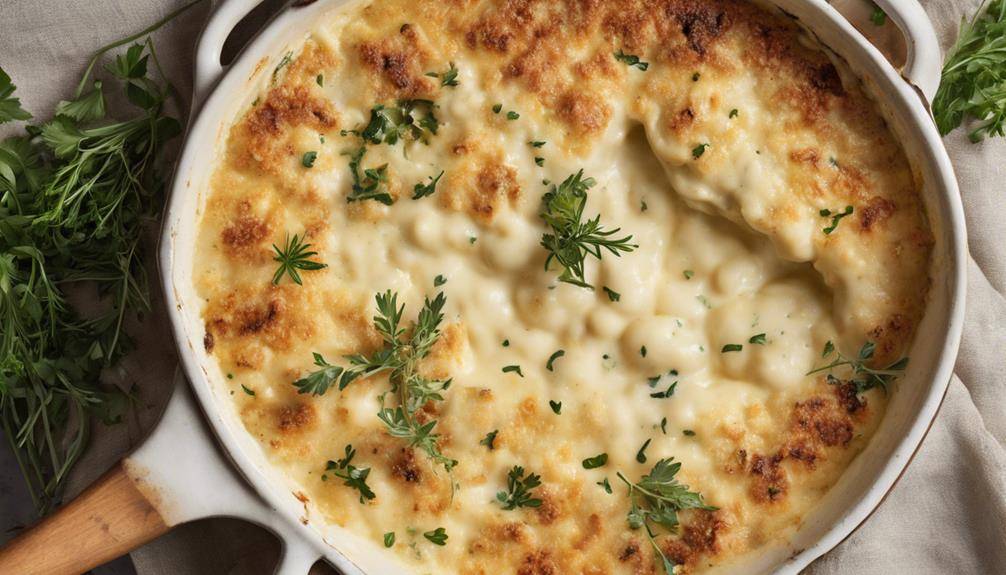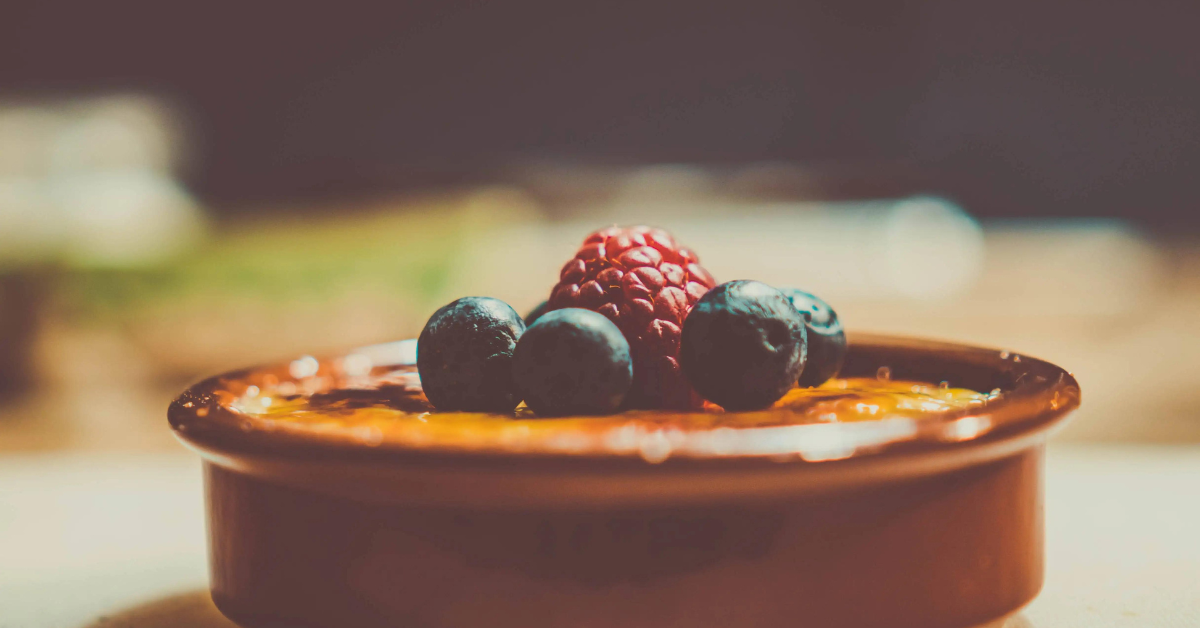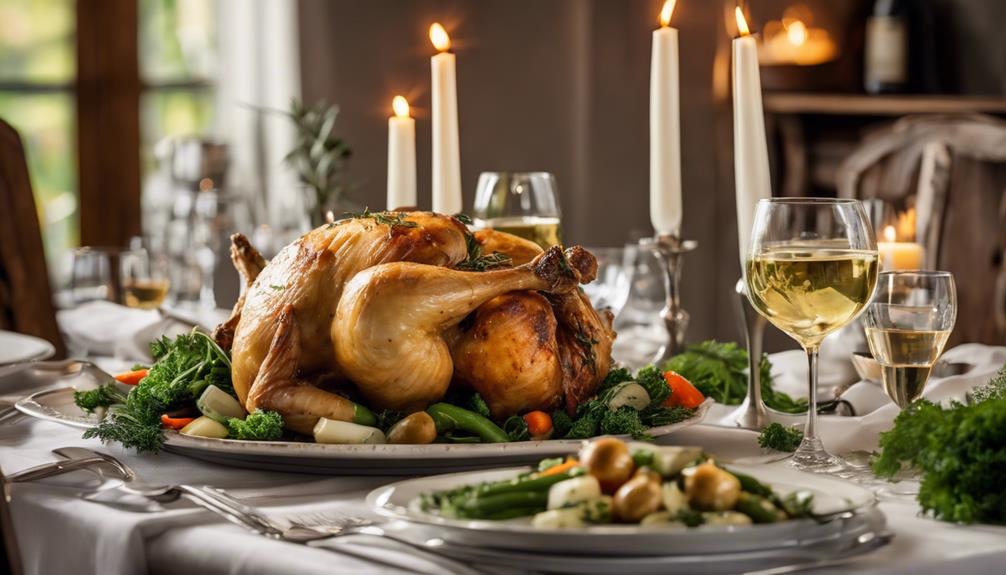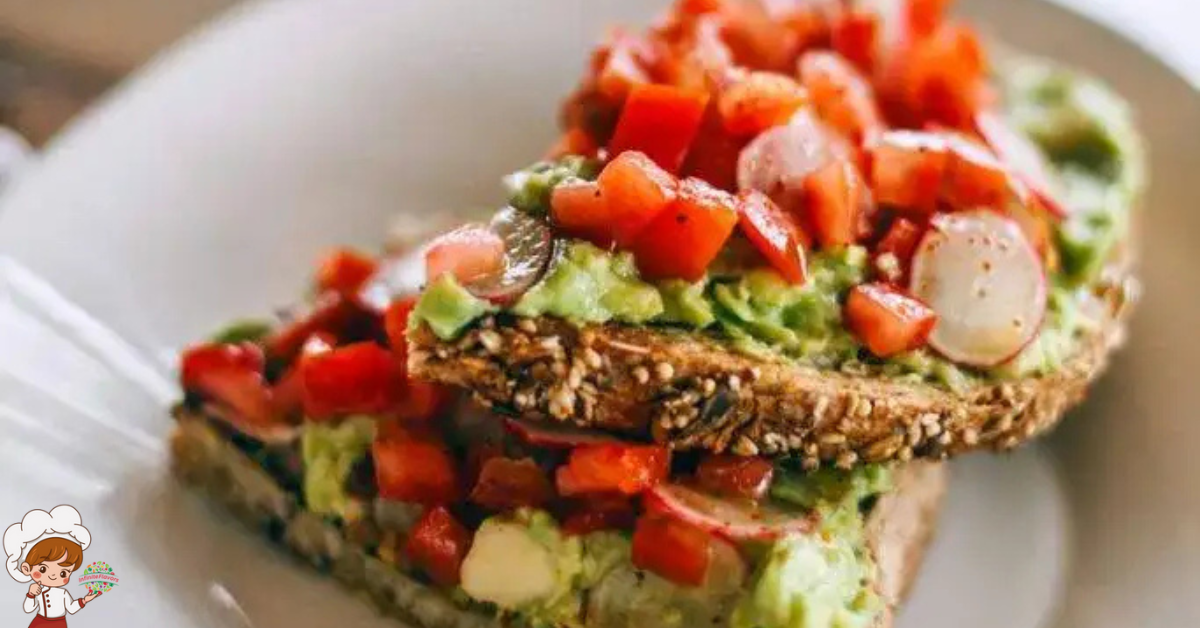How To Make A Gratinating Sauce

How To Make A Gratinating Sauce; To make a gratinating sauce, start by creating a roux with equal parts butter and flour cooked until it’s light golden. Gradually whisk in milk or cream to achieve your desired richness, followed by seasoning with salt, pepper, and a pinch of nutmeg. Select cheeses like Gruyère or sharp cheddar for depth and flavor. Once your sauce is smooth, pour it over your dish and cover it with breadcrumbs for that golden crust. Broil it on high heat for a few minutes until bubbly and crispy. You’re on the way to a delicious meal, and there’s more delicious guidance ahead!
Understanding Gratinating Sauce
Understanding gratinating sauce starts with recognizing its purpose: creating a deliciously crisp, golden-brown topping for your dishes. This technique has a rich history, dating back to French cuisine, where it became a staple in classic gratin recipes. You might’ve enjoyed a comforting potato gratin or a rich mac and cheese, both showcasing the delightful texture and flavor that a gratinating sauce brings.
The concept of gratin comes from the French word “gratter,” meaning “to scrape,” which highlights how diners would often scrape the crusty top layer of baked dishes to savor every morsel. Over time, gratinating sauces evolved, incorporating various ingredients to enhance their flavor and texture. It’s fascinating to think about how chefs have adapted these sauces across cultures, using different cheeses, breadcrumbs, and even herbs to complement their dishes.
When you’re preparing a gratin, you’re not just adding a topping; you’re elevating the entire meal. The contrast between the creamy dish beneath and the crunchy surface adds depth and excitement to each bite. Classic gratin recipes often rely on a blend of cream, cheese, and sometimes a hint of garlic or nutmeg. Gratinating sauce can turn simple ingredients into something extraordinary.
Essential Ingredients Needed
To create a delicious gratinating sauce, you’ll need a few key ingredients that come together to make that irresistible topping. First, start with a base of butter and flour to form a roux. This combination not only thickens your sauce but also adds essential flavors that enhance the overall dish. You’ll want to cook the roux until it’s a light golden color, which will contribute to the final sauce consistency.
Next, you’ll need milk or cream. The choice between the two will depend on how rich you want your sauce to be. Milk will provide a lighter option, while cream will give you that luxurious, velvety texture. Slowly whisk in your chosen liquid to the roux, allowing it to thicken gradually. This step is vital for achieving a smooth sauce consistency.
Don’t forget to season your sauce. Salt, pepper, and a pinch of nutmeg can elevate the essential flavors, bringing depth to your gratinating sauce. You might also consider adding garlic or onion powder for an extra layer of taste.
Choosing the Right Cheese
When you’re choosing the right cheese for your gratinating sauce, think about the type of cheese that will enhance your dish. Consider how different flavors and textures will pair with your ingredients, as well as how well the cheese melts. The right choice can elevate your sauce from good to unforgettable.
Cheese Types Overview
Which cheese will elevate your gratin to the next level? The right cheese can bring a delightful balance of flavor and texture to your dish. When exploring cheese varieties, consider those with great melting properties like Gruyère or Fontina, as their creamy texture blends beautifully with your sauce.
Cheese flavor plays a vital role; sharp cheeses like aged cheddar add a robust kick, while milder cheeses offer subtlety. Don’t forget about cheese aging; the longer a cheese ages, the more complex its flavor becomes.
As you select your cheese, think about cheese pairings. Certain cheeses complement specific vegetables and meats, enhancing the overall dish. Also, consider cheese origins, as regional cheeses often have unique characteristics that can influence your gratin’s taste.
For ideal cheese nutrition, aim for cheeses that provide a balance of protein and fat, contributing to the richness of your gratin. Finally, make sure to maintain proper cheese storage to keep freshness; wrap your cheese well to prevent spoilage. With these considerations in mind, you’ll be well on your way to creating a delicious gratin that showcases the best of cheese!
Flavor Pairing Considerations
Selecting the right cheese for your gratin involves more than just personal preference—it’s about the interplay of flavors and textures that will elevate your dish. Start by considering herb combinations that complement your main ingredients. For instance, if you’re using rosemary, a sharp cheese like aged Gruyère can enhance the overall profile.
Next, think about the spice profiles in your dish. A cheese with a hint of nuttiness can balance out spicy elements, while a milder cheese might let them shine. Acidity balance is also essential; pairing a tangy cheese with rich ingredients can create a harmonious contrast.
Don’t overlook umami enhancement; cheeses like Parmesan or aged Gouda can deepen the savory notes of your gratin. Pay attention to sweetness contrast as well—adding a touch of sweeter cheese can round out the flavors.
Temperature considerations matter too; choose cheeses that will perform well in the cooking environment. Finally, factor in regional influences and seasonal ingredients. Local cheeses can add authenticity and freshness to your dish, making your gratin not just a meal, but a celebration of flavors.
Texture and Meltability
Choosing the right cheese for your gratin hinges not just on flavor, but also on texture and meltability. You want to achieve the perfect sauce viscosity, which is essential for a smooth and creamy base. Look for cheeses that offer good melt quality, like Gruyère or Fontina. These cheeses melt beautifully, ensuring your sauce remains stable and doesn’t separate when baked.
Consider how different cheeses contribute to texture contrast. A combination of a melty cheese with a firmer cheese can enhance the overall experience. For instance, mixing sharp cheddar with a creamier cheese can create a delightful flavor balance. Pay attention to ingredient ratios—too much of one cheese can alter the sauce’s texture and viscosity.
Serving temperature plays an important role, too. Cheese that melts well at higher temperatures is key for that golden, bubbly finish. Use browning techniques like broiling to achieve that coveted crisp top layer. By carefully selecting your cheeses and balancing their properties, you’ll create a gratin that’s not just delicious, but also visually appealing and texturally satisfying.
Preparing the Base Sauce
When you’re ready to prepare the base sauce, choosing the right ingredients is key to achieving that perfect flavor. You’ll want to understand the cooking techniques that bring out the best in those ingredients, ensuring a smooth and creamy texture. Let’s explore how to combine these elements effectively for your gratinating sauce.
Choosing the Right Ingredients
Getting the right ingredients is essential for preparing a flavorful base sauce that elevates your gratin. Focus on ingredient quality by choosing fresh, seasonal produce. This not only enhances flavor but also guarantees that you’re using ingredients at their peak. Consider your dietary preferences and those of your guests; there are plenty of organic options available that cater to various needs.
Sourcing tips can make a difference—visit local suppliers or farmers’ markets to find the freshest vegetables and herbs. When selecting your produce, aim for a good flavor balance. For instance, if you’re working with earthy vegetables like mushrooms, complement them with brighter herbs like parsley or thyme.
Don’t forget about the importance of spice combinations. A well-thought-out mix can transform your sauce from bland to extraordinary. Experiment with spices that match your main ingredients, and adjust according to your taste. By focusing on these aspects, you’ll create a base sauce that not only supports but enhances your gratin, making it a dish worth remembering. Remember, the foundation of your sauce starts with the right ingredients!
Cooking Techniques Explained
Now that you’ve gathered high-quality ingredients, it’s time to focus on the cooking techniques that will form the foundation of your gratin sauce. Start by selecting your cooking method. A roux, made from equal parts flour and fat, is a classic base. This technique helps achieve the desired sauce consistency. Whisk in your liquid gradually to avoid lumps, ensuring a smooth texture.
As you simmer the sauce, pay attention to flavor balance. Season with salt, pepper, and perhaps a touch of nutmeg for warmth. Don’t hesitate to make ingredient substitutions; for example, use vegetable broth instead of chicken broth for a vegetarian option.
To elevate your sauce presentation, consider adding cheese or herbs before serving. Serve at the right temperature—warm but not boiling—to enhance the tasting experience. You can also explore sauce variations by adding components like mushrooms or spinach for depth.
Incorporating Flavorful Additions
Incorporating flavorful additions into your gratinating sauce can elevate the dish to new heights. Start by considering herb additions that can enhance the overall taste; fresh herbs like thyme or parsley bring brightness while balancing richness. Spice blends can introduce warmth and complexity, so don’t hesitate to experiment with your favorites.
Citrus zest is another fantastic way to brighten your sauce. A hint of lemon or orange zest can cut through the creaminess, adding a revitalizing note. If you’re looking for texture and depth, nutty toppings like toasted breadcrumbs or nuts can provide a delightful crunch that contrasts with the smooth sauce.
Don’t forget to include umami boosters, which can truly transform your sauce. Ingredients like roasted garlic, sautéed mushrooms, and caramelized onions contribute deep, savory flavors that enhance the overall richness. If you’re feeling adventurous, try incorporating savory meats, such as cooked bacon or pancetta, for an added layer of taste.
Balancing these elements is key. You want your sauce to be rich and flavorful without overwhelming the dish. As you mix in these additions, taste frequently to verify you’re achieving the desired profile. Each ingredient should complement the others, creating a harmonious blend that elevates your gratin. With these flavorful additions, your gratinating sauce will not only be delicious but also memorable, impressing everyone at the table.
The Role of Breadcrumbs
Breadcrumbs play an essential role in creating that coveted golden crust on your gratin. They not only enhance the texture but also add a delightful crunch that contrasts beautifully with the creamy sauce beneath. When choosing breadcrumbs, consider various bread types; each brings its unique flavor and texture. For example, using sourdough breadcrumbs can impart a tangy taste, while whole wheat breadcrumbs offer a heartier bite.
To elevate your gratin, don’t forget about seasoning options. You can mix in herbs like thyme or rosemary for an aromatic touch, or sprinkle in some garlic powder for an extra kick. Parmesan cheese can also be a game-changer, adding richness and a touch of saltiness to your breadcrumb mixture.
When preparing your gratin, guarantee you evenly distribute the breadcrumbs on top. This helps create a uniform crust that cooks evenly. You may also want to drizzle a bit of melted butter over the breadcrumbs before baking. This simple step can help achieve that golden brown finish while providing extra flavor.
Techniques for Thickening
Creating a creamy gratin sauce that can stand up to the crunchy topping involves mastering thickening techniques. To achieve the perfect consistency, you can start by exploring various starch options. Cornstarch and arrowroot are excellent choices for quick thickening, while flour creates a classic roux when cooked with fat.
Emulsification techniques also play an important role. By slowly incorporating fat into your liquid, you create a stable mixture that thickens beautifully. This is essential when making a béchamel or cheese sauce.
Don’t underestimate the power of simmering methods. Keeping your sauce at a gentle simmer allows flavors to meld, while also promoting evaporation. Remember, temperature control is critical—too high, and you risk scorching; too low, and it won’t thicken effectively.
Reduction strategies can intensify flavors and thicken your sauce simultaneously. By simmering your liquid until it reduces, you concentrate flavors while achieving a thicker consistency.
When using thickening agents, timing is key. Add them at the right point in your cooking process to get the best results. Blending techniques, such as using an immersion blender for smooth sauces, can also enhance thickness.
Achieving the Perfect Texture
Achieving the perfect texture in your gratin sauce is essential for a delightful dish. You want a sauce consistency that’s creamy yet not too thick, allowing it to coat your ingredients beautifully. Start by paying attention to your ingredient ratios; too much liquid can lead to a watery sauce, while too many thickening agents can create an unpleasant paste.
Experiment with texture variations by incorporating different emulsification techniques, such as whisking in butter or using a blender for a smoother finish. This not only impacts the texture but also enhances flavor development, giving your sauce a rich, well-rounded taste.
Keep in mind the serving temperatures, as a sauce that’s too hot can become runny, while one that’s too cool may thicken unnaturally. Aim for a warm, velvety sauce that complements your dish beautifully.
For ideal sauce storage, remember that the sauce may thicken over time. If you’re making it ahead, consider adding a bit of liquid before reheating to restore that desired texture. When plating presentation, the color of your sauce also plays a role; a vibrant, well-emulsified sauce can elevate the visual appeal of your dish.
Broiling Vs. Baking
While both broiling and baking can create delicious gratin dishes, understanding their differences is essential for achieving the perfect finish. Broiling and baking serve distinct purposes in the kitchen, and knowing when to use each method can elevate your gratin game.
Broiling techniques involve cooking food with high, direct heat from above. This method is great for achieving that golden, bubbly crust you desire on top of your gratin. When you broil, aim for a high temperature—typically around 500°F. Keep a close eye on your dish, as broiling can quickly turn a perfectly browned crust into a burnt one.
On the other hand, baking involves cooking with indirect heat, usually at lower baking temperatures ranging from 350°F to 450°F. This method allows your gratin to cook evenly throughout, ensuring the ingredients blend beautifully while preventing the top from overcooking. Baking is particularly useful if you’re using heavier ingredients like potatoes or vegetables that need more time to soften.
When deciding between the two, consider the texture you want. If you’re looking for that crispy finish, broiling is your best bet. If you prefer a more evenly cooked dish with a soft interior, stick to baking. You can even use a combination of both—bake your gratin first to cook it through, then finish it off under the broiler for a perfect, golden top.
Serving Suggestions
When you’re serving your gratinating sauce, think about how it can elevate your meal. It pairs beautifully with roasted vegetables, layers well with proteins like chicken or fish, and complements ideal side dishes such as creamy mashed potatoes or a fresh salad. Get creative and enjoy experimenting to find the perfect combinations!
Pairing With Vegetables
Gratinating sauce pairs beautifully with a variety of vegetables, enhancing their flavors and textures. When choosing your vegetable selection, think about seasonal vegetables like zucchini, cauliflower, or Brussels sprouts. These not only taste great but also provide vibrant color combinations on your plate.
For the best results, consider different cooking methods. Roasting vegetables brings out their natural sweetness, making them an excellent base for your gratinating sauce. Don’t forget to apply some seasoning tips—herbs like thyme or rosemary can elevate the dish considerably.
Experiment with texture contrasts by combining creamy sauce with crispy-topped vegetables. This adds an exciting dimension to your meal. When considering flavor profiles, think about pairing earthy vegetables like mushrooms with a rich cheese sauce, or sweet potatoes with a hint of nutmeg.
For presentation ideas, layer your vegetables in a baking dish, allowing the sauce to cascade over the top. This not only looks inviting but also guarantees each bite is packed with flavor. With these preparation techniques, you’ll create a delightful dish that’s sure to impress your guests!
Layering With Proteins
Incorporating proteins into your gratinating dish can elevate the meal even further, creating a hearty and satisfying experience. Start by choosing protein types that complement your sauce varieties, such as chicken, seafood, or plant-based options. When layering, consider using different proteins in combination for enhanced flavors and textures. For instance, try combining shredded chicken with sautéed shrimp, allowing varied protein textures to create a delightful mouthfeel.
Don’t forget about marinating techniques; marinating your proteins beforehand can considerably boost flavor enhancements. Pay attention to cooking times, guaranteeing that each protein is cooked to perfection before layering. This consideration is essential, as undercooked proteins can lead to food safety issues.
As you layer, think about your ingredient combinations. A creamy sauce pairs wonderfully with roasted chicken, while a tangy sauce can elevate fish. Adjust temperature considerations accordingly—baking at the right temperature guarantees that your proteins cook evenly while the gratin develops a golden crust.
Ideal Side Dishes
Pairing your gratin with the right side dishes can elevate the entire meal experience. To create a harmonious plate, consider incorporating gratin side dishes that boast complementary flavors. A fresh, crisp salad with a tangy vinaigrette can cut through the richness of your gratin, providing a revitalizing contrast. Think about roasted seasonal vegetables, which not only add color but also enhance the dish’s overall flavor profile.
If you’re leaning towards a more indulgent meal, buttery garlic bread is a fantastic option. The crunch of the bread and its garlicky aroma beautifully balance the creaminess of your gratin. Alternatively, sautéed greens like spinach or kale bring a nutritious element to the table while their slight bitterness pairs well with the dish’s richness.
For a heartier touch, consider serving your gratin alongside a protein, like grilled chicken or baked fish, to round out the meal. Remember, the key is to choose gratin side dishes that complement the main flavors without overpowering them. With these options in mind, you’ll create a satisfying and well-rounded dining experience that leaves everyone wanting more.
Common Mistakes to Avoid
When making a gratinating sauce, there are a few common mistakes that can easily derail your efforts. One of the biggest pitfalls is falling for common misconceptions about ingredients. Many believe that more cheese equals a better sauce, but too much cheese can lead to a greasy texture instead of a creamy, smooth consistency. Instead, focus on balancing your ingredients for the best flavor.
Another major issue is over seasoning. It’s easy to get carried away with salt, pepper, and other spices, but over seasoning pitfalls can ruin your sauce. Always taste as you go, and remember that you can always add more seasoning later, but you can’t take it out once it’s in. Start with less and build up to the flavor profile you want.
Additionally, pay attention to the cooking method. Rushing the process can lead to uneven cooking and a sauce that lacks depth. Allow your ingredients to cook properly on low heat to develop their flavors.
Lastly, don’t forget about the importance of texture. A common mistake is not straining the mixture properly. If you skip this step, you may end up with a lumpy sauce that’s unappealing. Straining guarantees a silky finish.
Creative Variations to Try
Gratinating sauces aren’t just about sticking to traditional recipes; they offer a canvas for creativity that can elevate any dish. You can start by experimenting with herb infusions. Fresh basil or thyme can transform a basic sauce into something aromatic and vibrant. For a kick, consider spice variations like smoked paprika or cayenne pepper to give your gratin a unique twist.
Don’t forget about nutty additions! A sprinkle of toasted pine nuts or walnuts can add a delightful crunch that complements the creaminess of your sauce. Speaking of creaminess, explore cream alternatives such as cashew cream or coconut milk for a dairy-free option, adding a whole new layer of flavor.
When it comes to the base ingredients, think about incorporating seasonal vegetables. Roasted squash in the fall or fresh asparagus in the spring can make your gratin not only seasonal but also visually appealing. You can also make protein swaps; try using shredded chicken, crab meat, or even plant-based proteins to cater to different dietary preferences.
To really impress, experiment with gourmet toppings like truffle oil or a sprinkle of aged cheese, which can elevate your dish from simple to sophisticated. Finally, don’t shy away from international flavors—adding a hint of curry powder or a splash of soy sauce can take your gratin to exciting new culinary heights. Embrace these variations, and you’ll create gratin sauces that are anything but ordinary!
Frequently Asked Questions: How To Make A Gratinating Sauce
Can I Use Non-Dairy Alternatives in a Gratinating Sauce?
Yes, you can use non-dairy options in your sauce. Just keep in mind that flavor substitutions might alter the taste. Experiment with different non-dairy cheeses or creams to find the perfect balance for your dish.
How Long Can I Store Leftover Gratinating Sauce?
You can store leftover sauce in the fridge for up to five days. Watch for spoilage signs like off smells or mold. For best storage tips, keep it in an airtight container. Enjoy safely!
Is It Possible to Freeze Gratinating Sauce?
Yes, you can freeze gratinating sauce. Use proper freezing techniques to maintain its sauce texture. Just make sure to cool it completely before transferring to airtight containers, ensuring it stays flavorful upon thawing.
What Dishes Pair Well With Gratinating Sauce?
When you think about dishes that pair well with gratinating sauce, consider creamy pastas, roasted vegetables, or baked potatoes. Using various cheese varieties and adjusting sauce thickness enhances flavors and textures for a delightful meal.
Can I Make Gratinating Sauce Ahead of Time?
Yes, you can make the sauce ahead of time! Just guarantee the sauce consistency stays smooth. Reheating can enhance flavors, but avoid overcooking to maintain that rich taste. Store it properly in the fridge for best results.
Conclusion
Now that you know how to make a gratinating sauce, you can elevate your dishes with ease. Remember to experiment with different cheeses and flavor additions to find your perfect blend. Whether you choose to broil or bake, your creations will surely impress. Don’t shy away from trying new variations, and keep an eye out for common pitfalls. With practice, you’ll master this versatile sauce and bring a delicious touch to your meals. Enjoy your cooking!








